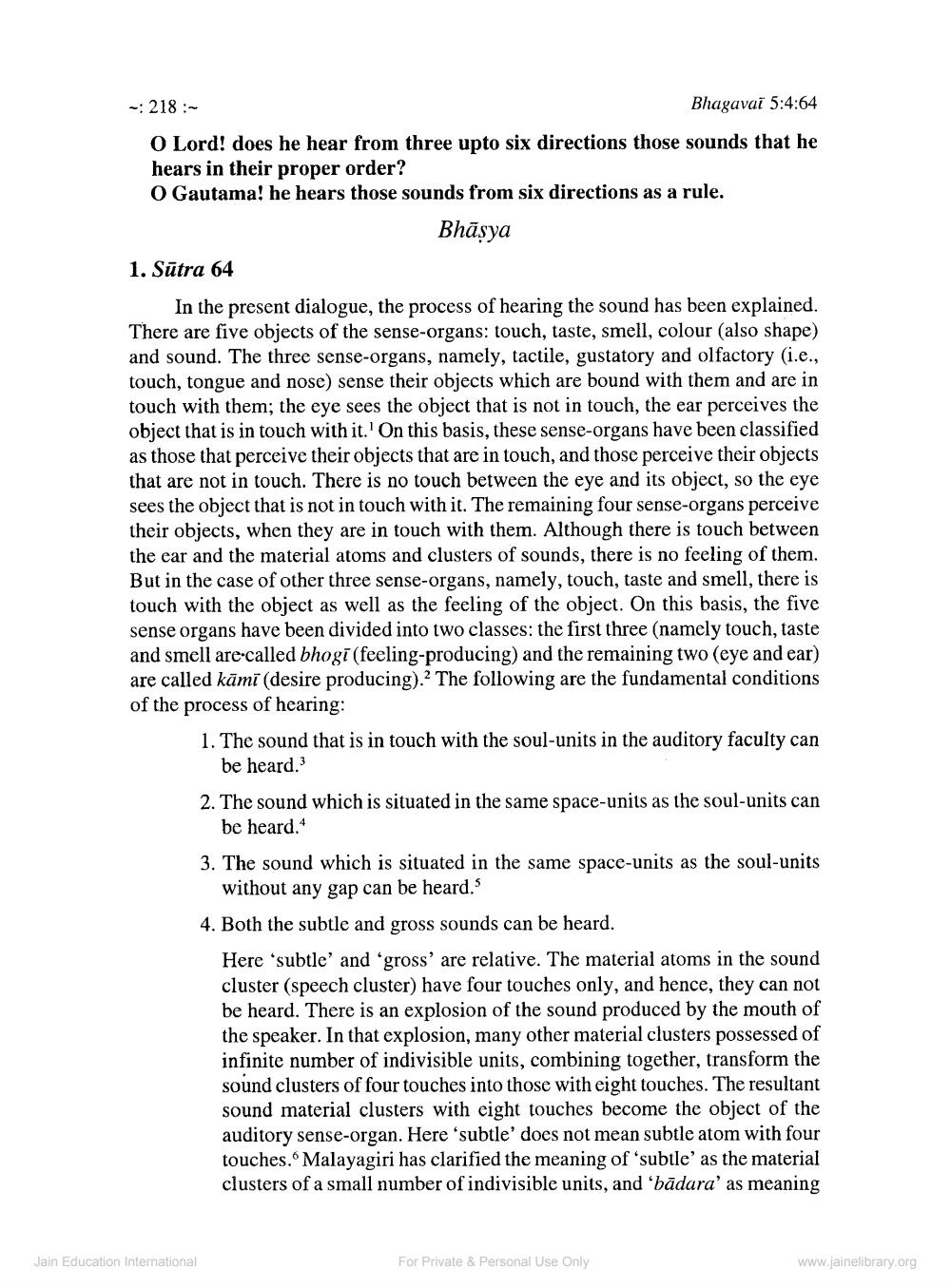________________
-: 218 :
Bhagavai 5:4:64 O Lord! does he hear from three upto six directions those sounds that he hears in their proper order? O Gautama! he hears those sounds from six directions as a rule.
Bhāsya
1. Sutra 64
In the present dialogue, the process of hearing the sound has been explained. There are five objects of the sense-organs: touch, taste, smell, colour (also shape) and sound. The three sense-organs, namely, tactile, gustatory and olfactory (i.e., touch, tongue and nose) sense their objects which are bound with them and are in touch with them; the eye sees the object that is not in touch, the ear perceives the object that is in touch with it.' On this basis, these sense-organs have been classified as those that perceive their objects that are in touch, and those perceive their objects that are not in touch. There is no touch between the eye and its object, so the eye sees the object that is not in touch with it. The remaining four sense-organs perceive their objects, when they are in touch with them. Although there is touch between the ear and the material atoms and clusters of sounds, there is no feeling of them. But in the case of other three sense-organs, namely, touch, taste and smell, there is touch with the object as well as the feeling of the object. On this basis, the five sense organs have been divided into two classes: the first three (namely touch, taste and smell are called bhogi (feeling-producing) and the remaining two (eye and ear) are called kāmi (desire producing). The following are the fundamental conditions of the process of hearing:
1. The sound that is in touch with the soul-units in the auditory faculty can
be heard. 2. The sound which is situated in the same space-units as the soul-units can
be heard. 3. The sound which is situated in the same space-units as the soul-units
without any gap can be heard. 4. Both the subtle and gross sounds can be heard.
Here 'subtle' and 'gross' are relative. The material atoms in the sound cluster (speech cluster) have four touches only, and hence, they can not be heard. There is an explosion of the sound produced by the mouth of the speaker. In that explosion, many other material clusters possessed of infinite number of indivisible units, combining together, transform the sound clusters of four touches into those with eight touches. The resultant sound material clusters with eight touches become the object of the auditory sense-organ. Here 'subtle' does not mean subtle atom with four touches. Malayagiri has clarified the meaning of 'subtle' as the material clusters of a small number of indivisible units, and 'bādara' as meaning
Jain Education International
For Private & Personal Use Only
www.jainelibrary.org




